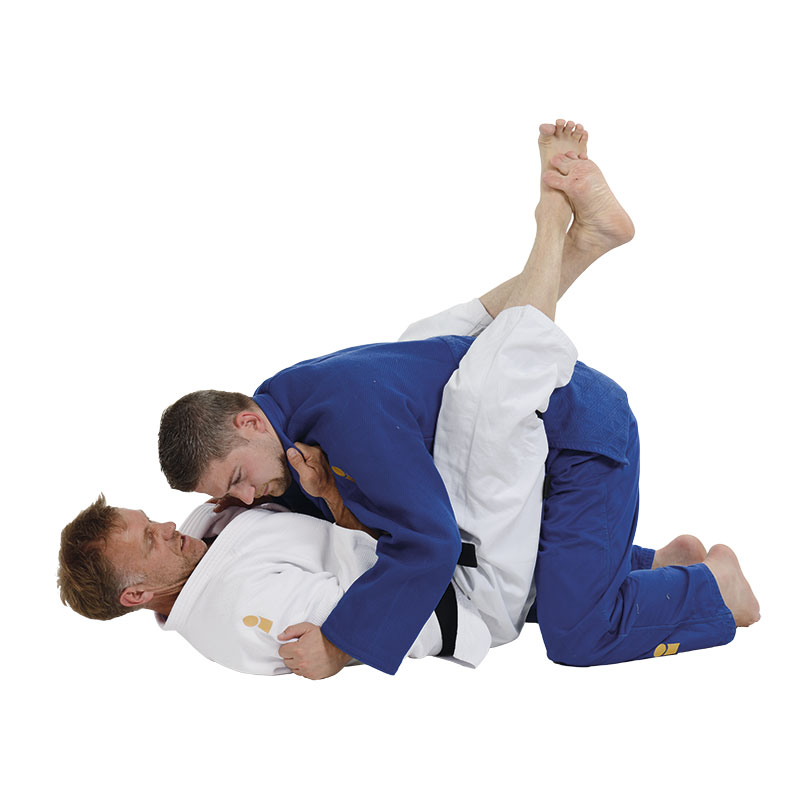Dō-jime 胴絞 (Body Compression Strangle)
Classification: Katame-waza → Shime-waza (Strangulation Techniques)
Status: Forbidden in both shiai (competition) and randori (free practice) due to the potential risk of injury.
Description
Dō-jime is a body compression technique where tori wraps their legs around uke’s torso (usually from guard position or when behind uke) and squeezes tightly using the strength of the thighs and hips. The aim is to compress the torso and kidneys, creating significant pressure that forces uke to submit.
This is not a choke to the neck but rather a constrictive squeeze to the midsection—hence its inclusion under shime-waza is more traditional than functional.
How to Apply
-
Tori is positioned behind or beneath uke, often from guard or back control.
-
Tori wraps both legs around uke’s midsection, crossing the ankles or locking in a figure-four (if flexibility allows).
-
With the feet crossed or locked, tori extends the legs powerfully while pulling uke’s upper body toward the chest, compressing the abdominal cavity and applying pressure to the kidneys and diaphragm.
-
The resulting pressure can cause pain, loss of breath, or discomfort that leads to uke tapping out.
Important Note
Although not a direct strangulation, dō-jime is listed under shime-waza in traditional judo because of its submission effect. However, due to:
-
potential kidney damage,
-
spinal compression,
-
and the high level of discomfort without airway or vascular control,
this technique is explicitly banned in modern judo under IJF rules.
